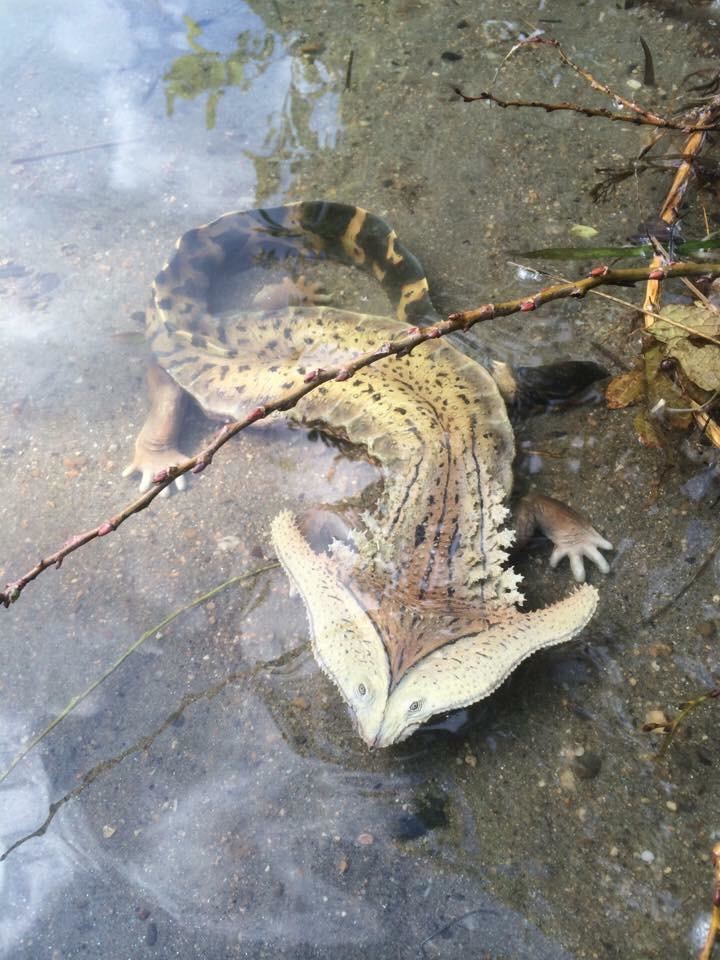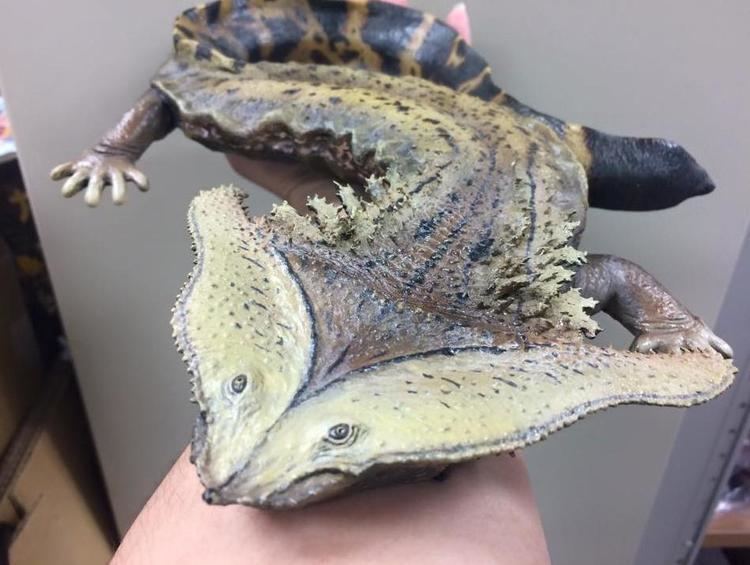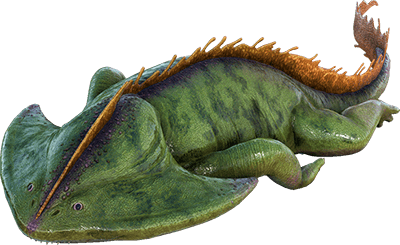Scientific name Diplocaulus Higher classification Diplocaulidae | ||
 | ||
Similar amphibians, Kaprosuchus, Chalicotherium, Lepospondyli, Eryops | ||
Diplocaulus ark survival evolved dossier news 58 ark amphibian breathing spotlight
Diplocaulus (meaning "double caul") is an extinct genus of lepospondyl amphibians from the Permian period of North America. It is one of the largest lepospondyls, with a distinctive boomerang-shaped skull. Remains attributed to Diplocaulus have been found from the Late Permian of Morocco and represent the youngest known occurrence of a lepospondyl.
Contents
- Diplocaulus ark survival evolved dossier news 58 ark amphibian breathing spotlight
- Ark survival evolved new dino diplocaulus kaprosuchus taming gameplay new update v248
- Description
- Pathology
- Diplocaulus on display
- References

Ark survival evolved new dino diplocaulus kaprosuchus taming gameplay new update v248
Description

Diplocaulus had a stocky, salamander-like body, but was relatively large, reaching up to 1 m (3.3 ft) in length. Its most distinctive features were the long protrusions on the sides of its skull, giving the head a boomerang shape. Judging from its weak limbs and relatively short tail, it is presumed to have swum with an up-and-down movement of its body, similar to modern whales and dolphins. The wide head could have acted like a fin, helping the creature glide through the water. Another possibility is that the shape was defensive, since even a large predator would have a hard time trying to swallow a creature with such a wide head.
Pathology
A trio of three juvenile Diplocaulus in a burrow of eight were found to have been partially eaten by the sail-backed pelycosaur Dimetrodon, which likely unearthed the amphibians during a drought. One of the three was killed with a bite to the head, taking part of its skull and portions of the brain; a fatal injury that the aestivating animal could not defend against
